Saxon battle sword of the XVI century.
- Western European sword, which was held mainly with two hands, but if necessary, one-handed grip was also possible. Made in Saxony around 1580 g. Length (total): 125,5, see Translation from English. Photos in high resolution.
Sword with a wide double-edged blade, with a flattened short Dol.
Ephesus open, to protect hands from weapons the enemy has a complex guard in the form of a cross-bar, perpendicular to the blade, and also protective massive rings between the blade and the basket-type handle, partially covering the ricasso.
On the ricasso - the unfinished part of the blade adjacent to the guard, the borders and engraved marks of three unidentified
gunsmiths from both sides.
Garda with straight cross-beams having spade ends with small balls at the ends. Oval-shaped handle across, tapering towards the guard, covered with leather. The handle includes a conical metal top. They can cause serious blows.
The sword has amazing balancing
Despite the apparent outward simplicity and restraint, the sword presented was classified as expensive. Saxon gunsmiths were famous for their craftsmanship in Europe. Such swords are the culmination of the development of Western European swords with an open hilt.
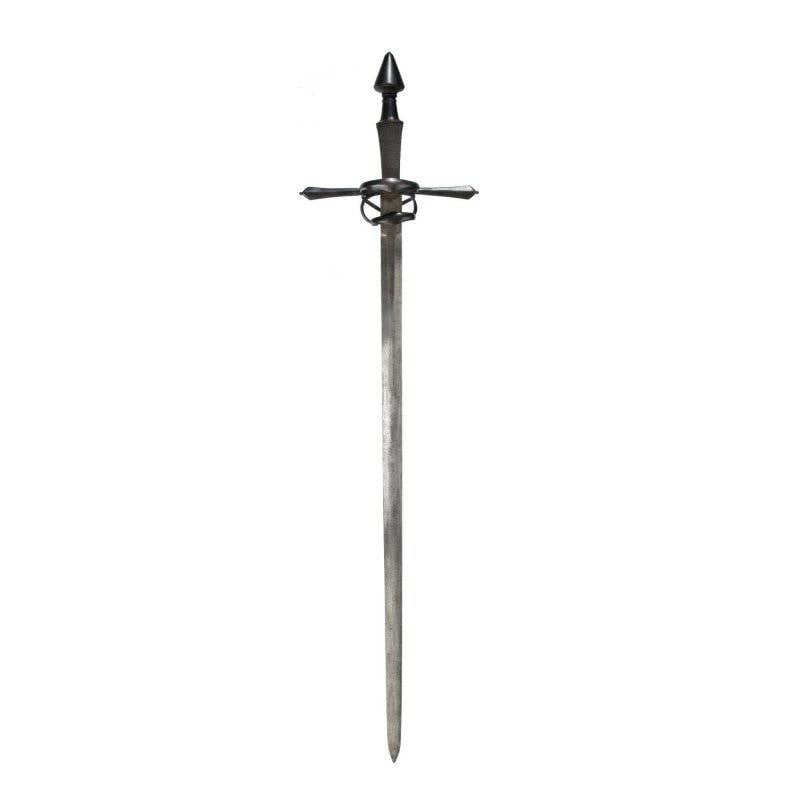
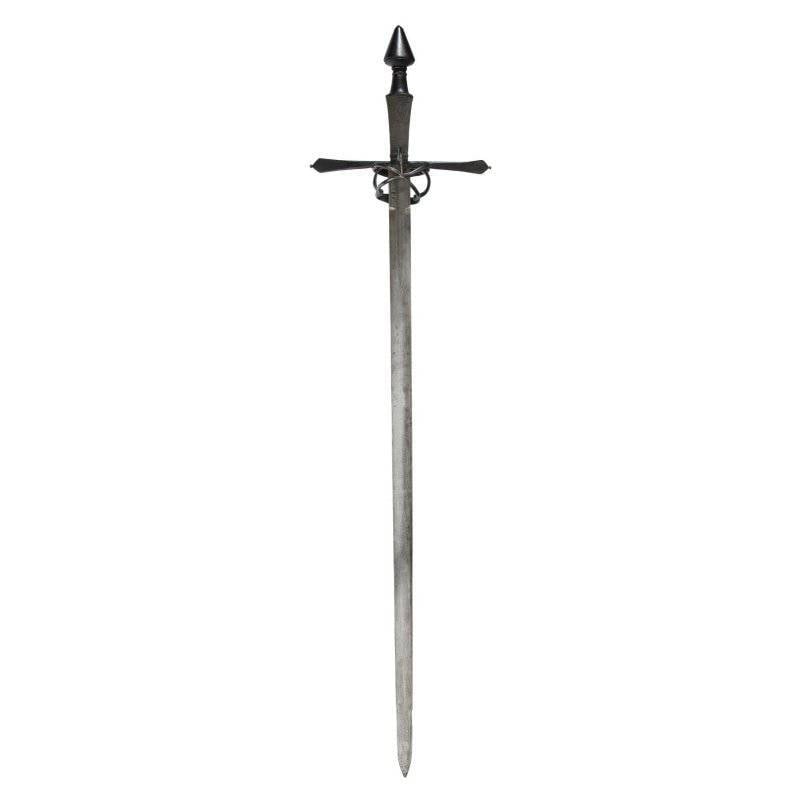
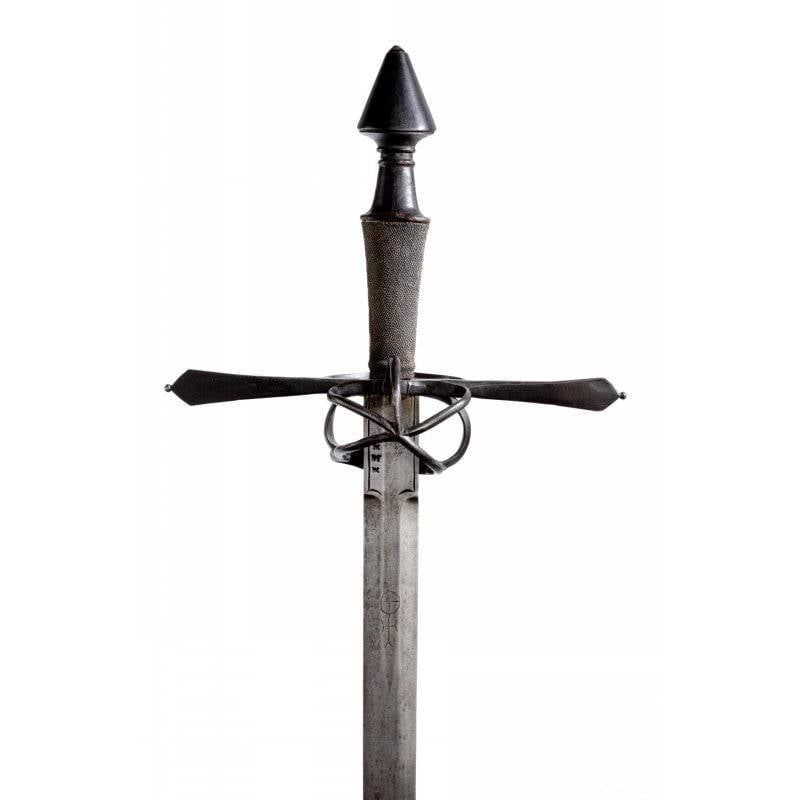
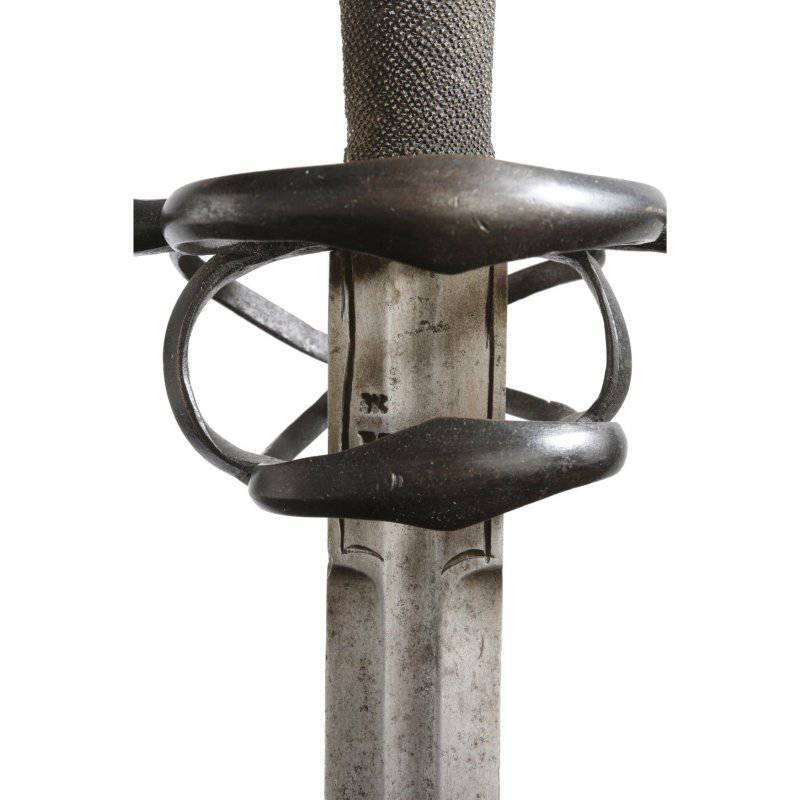
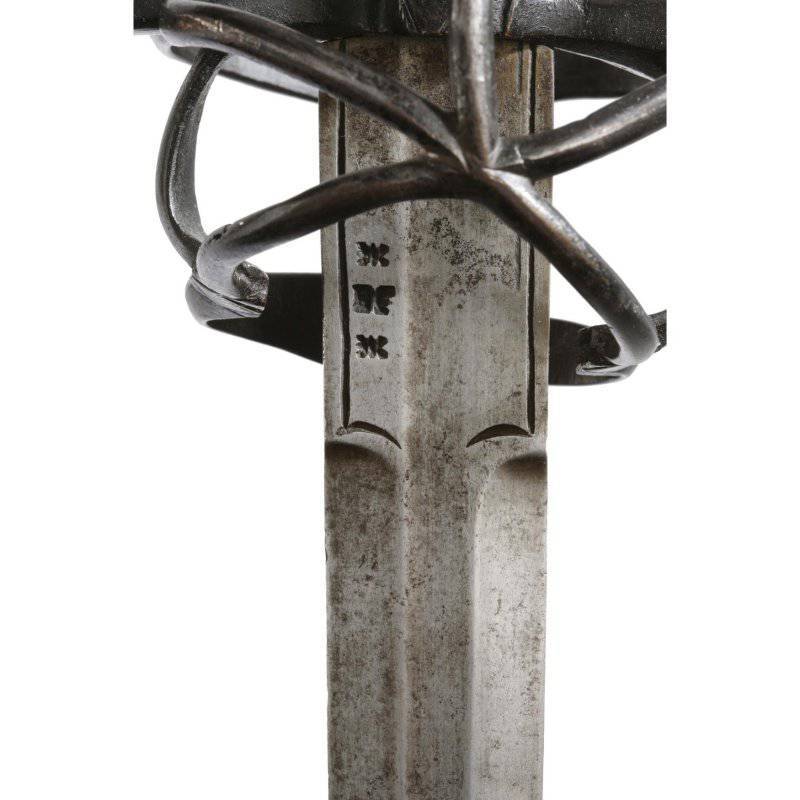
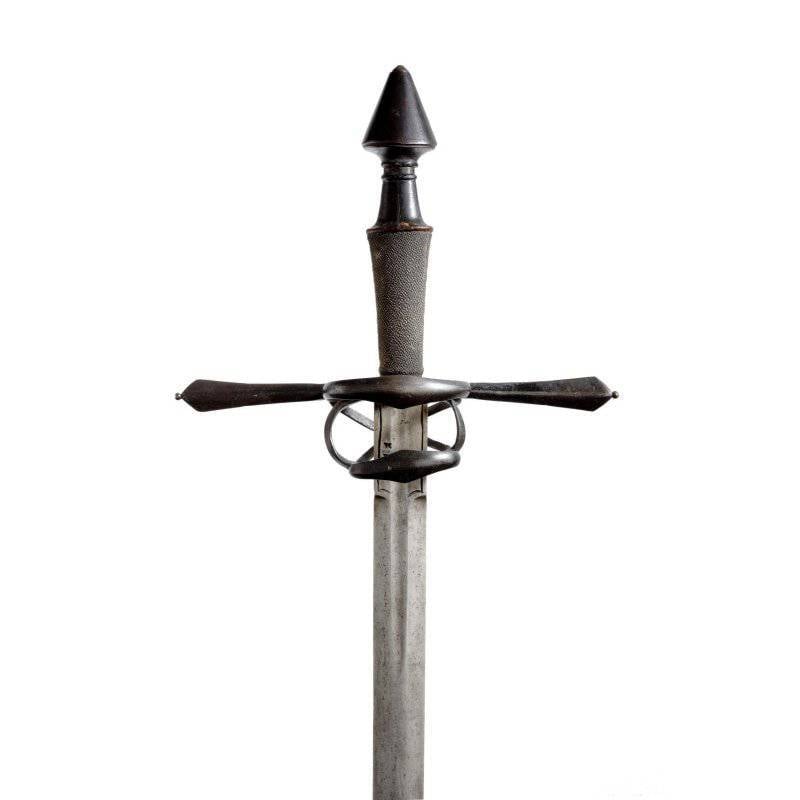
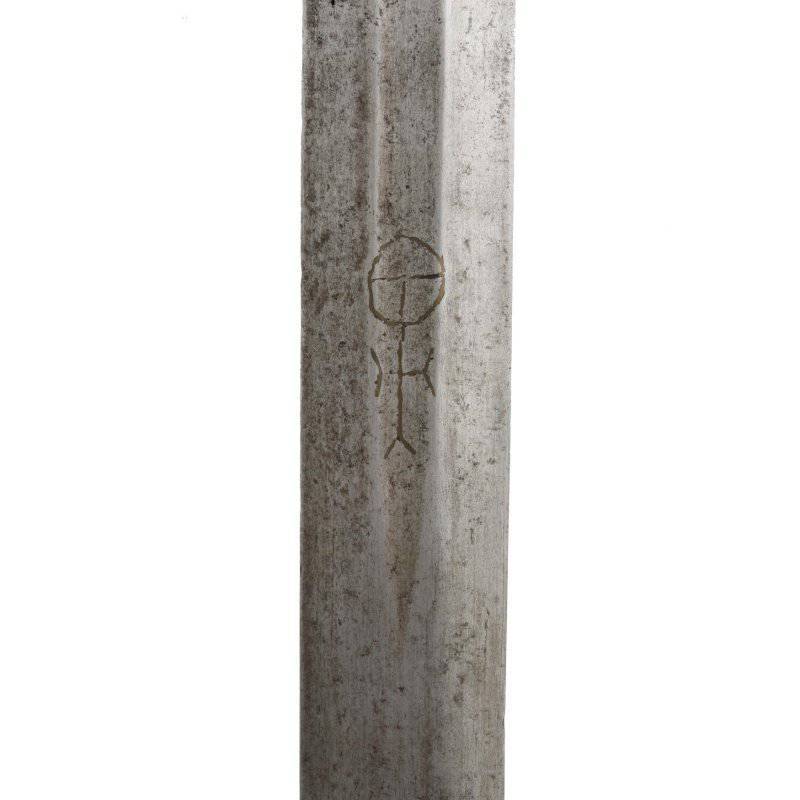
Information